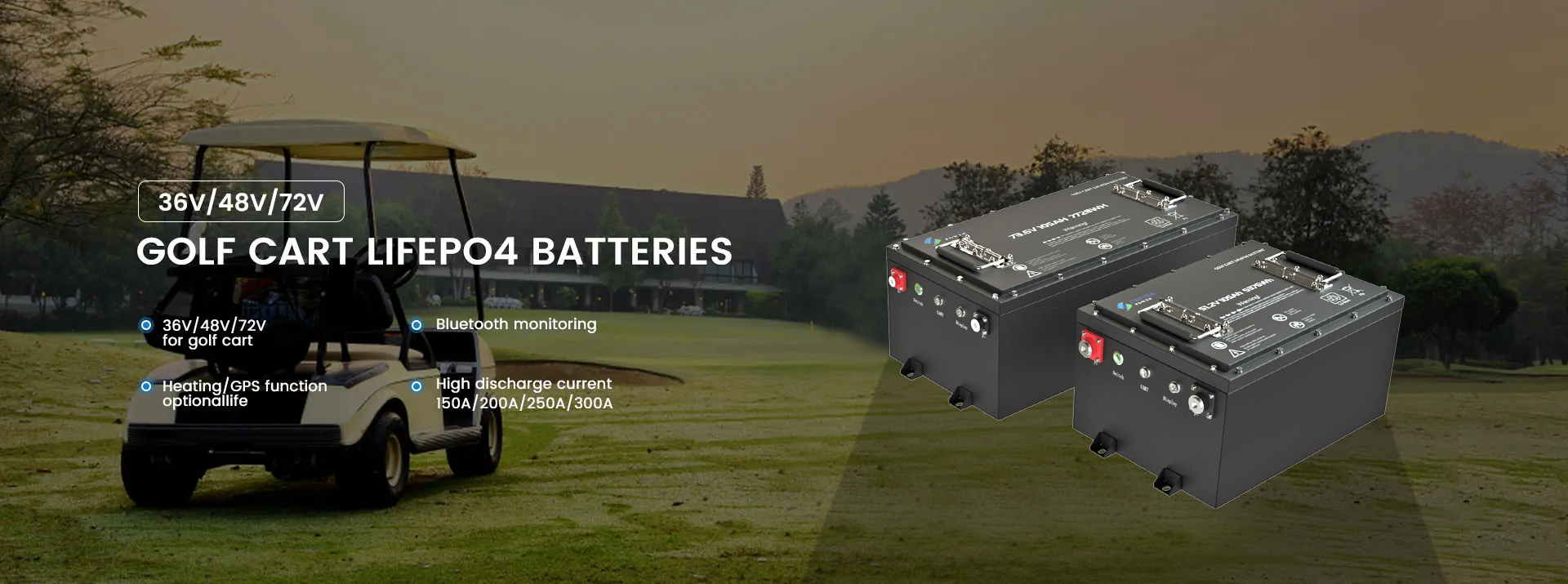Key Factors That Influence Charging Time
- Battery Capacity (Ah Rating):
- The larger the battery’s capacity, measured in amp-hours (Ah), the longer it will take to charge. For instance, a 100Ah battery will take longer to charge than a 60Ah battery, assuming the same charger is used.
- Common golf cart battery systems include 36V and 48V configurations, and higher voltages generally take a bit longer to charge fully.
- Charger Output (Amps):
- The higher the amperage of the charger, the faster the charging time. A 10-amp charger will charge a battery faster than a 5-amp charger. However, using a charger that is too powerful for your battery can reduce its lifespan.
- Smart chargers automatically adjust the charging rate based on the battery’s needs and can reduce the risk of overcharging.
- State of Discharge (Depth of Discharge, DOD):
- A deeply discharged battery will take longer to charge than one that is only partially depleted. For example, if a lead-acid battery is only 50% discharged, it will charge faster than one that’s 80% discharged.
- Lithium-ion batteries generally don't need to be fully depleted before charging and can handle partial charges better than lead-acid batteries.
- Battery Age and Condition:
- Over time, lead-acid batteries tend to lose efficiency and can take longer to charge as they age. Lithium-ion batteries have a longer lifespan and retain their charging efficiency better over the long term.
- Proper maintenance of lead-acid batteries, including regularly topping off water levels and cleaning terminals, can help maintain optimal charging performance.
- Temperature:
- Cold temperatures slow down the chemical reactions inside a battery, causing it to charge more slowly. In contrast, high temperatures can reduce battery lifespan and efficiency. Charging golf cart batteries in moderate temperatures (around 60–80°F) helps maintain consistent performance.
Charging Time for Different Battery Types
- Standard Lead-Acid Golf Cart Batteries:
- 36V system: A 36-volt lead-acid battery pack usually takes 6 to 8 hours to charge from a 50% depth of discharge. The charging time may extend to 10 hours or more if the batteries are deeply discharged or older.
- 48V system: A 48-volt lead-acid battery pack will take slightly longer, around 7 to 10 hours, depending on the charger and depth of discharge. These systems are more efficient than 36V ones, so they tend to provide more runtime between charges.
- Lithium-Ion Golf Cart Batteries:
- Charging time: Lithium-ion batteries for golf carts can fully charge in 3 to 5 hours, significantly faster than lead-acid batteries.
- Benefits: Lithium-ion batteries offer higher energy density, faster charging, and longer lifespan, with more efficient charge cycles and the ability to handle partial charges without damaging the battery.
Optimizing Charging for Golf Cart Batteries
- Use the Right Charger: Always use the charger recommended by your battery manufacturer. Smart chargers that automatically adjust the charging rate are ideal because they prevent overcharging and improve battery longevity.
- Charge After Every Use: Lead-acid batteries perform best when charged after each use. Allowing the battery to fully discharge before charging can damage the cells over time. Lithium-ion batteries, however, don't suffer from the same issues and can be charged after partial use.
- Monitor Water Levels (for Lead-Acid Batteries): Regularly check and refill the water levels in lead-acid batteries. Charging a lead-acid battery with low electrolyte levels can damage the cells and slow down the charging process.
- Temperature Management: If possible, avoid charging batteries in extreme hot or cold conditions. Some chargers have temperature compensation features to adjust the charging process based on ambient temperature.
- Keep Terminals Clean: Corrosion and dirt on battery terminals can interfere with the charging process. Clean the terminals regularly to ensure efficient charging.
Post time: Oct-24-2024






